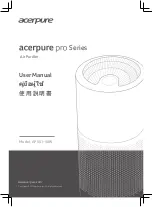
10
6-1
FLARING WORK
• Main cause of gas leakage is defect in flaring work.
Perform flaring work correctly in the following procedure.
1. Pipe cutting
• Cut the copper pipe correctly with a pipe cutter.
a
Copper pipe
b
Good
c
No good
d
Tilted
e
Uneven
f
Burred
2. Burrs removal
• Completely remove all burrs from the cut cross section of
the pipe.
• Put the end of the copper pipe downward to prevent burrs
from dropping in the pipe.
a
Burr
b
Copper pipe
c
Spare reamer
d
Pipe cutter
3. Putting nut on
• Remove flare nuts attached to indoor and outdoor unit, then
put them on pipe having completed burr removal.
(not possible to put them on after flaring work)
a
Flare nut
b
Copper pipe
4. Flaring work
• Perform flaring work using flaring tool as shown in the right.
Outside diameter
A
mm
mm
6.35
2.0-2.5
9.52
3.0-3.5
12.7
3.5-4.0
15.88
3.5-4.0
Firmly hold copper pipe in a die in the dimension shown in the
table above.
a
Flaring tool
b
Die
c
Copper pipe
d
Flare nut
e
York
5. Check
• Compare the flared work with a figure in the right.
• If flare is noted to be defective, cut off the flared section
and perform flaring work again.
a
Smooth all around
b
Inside is shining without any scratches
c
Even length all around
a
d
c
b
e
f
90
°
d
c
b
a
b
a
b
e
b
c
d
c
A
a
c
b
a
6. INDOOR/OUTDOOR UNIT CONNECTION FINISHING AND TEST RUN
6-2
PIPE CONNECTION
1. Indoor unit connection
• Connect both liquid and gas piping to the indoor unit.
- Apply a thin coat of refrigerant oil on the seat surface
of pipe.
- For connection first align the center, then hand tighten
the first 3 to 4 turns of flare nut.
- Use tightening torque table below as a guideline for
the indoor unit side union joint section, and tighten us-
ing two wrenches. Excess tightening damages the
flared section.
Pipe diameter
Tightening torque
mm
N·m
kgf·cm
6.35
13.7 to 17.7
140 to 180
9.52
34.3 to 41.2
350 to 420
12.7
49.0 to 56.4
500 to 575
15.88
73.5 to 78.4
750 to 800
2. Outdoor unit connection
• Connect pipes to stop valve pipe joint of the outdoor unit in
the same manner applied for the indoor unit.
- For tightening, use a torque wrench or spanner, and
use the same tightening torque applied for the indoor
unit.
3. Refrigerant pipe insulation
• Use pipe cover (foam polyethylene 8 mm thickness) which
is contained in accessories, insulate both liquid and gas
pipes together. Put the refrigerant piping and apply piping
tape
C
.
a
Indoor unit refrigerant pipe
b
Flare joint
d
Pipe cover
A
Refrigerant pipe
C
Piping tape
4. Knockout cover
• Attach knockout cover
9
to close knockout hole to prevent
rat or something strange from getting into the indoor unit.
9
Knockout cover
0
Screw for
9
4
×
10 mm
A
b
a
c
d
c
9
0
Connecting wire and
refrigerant pipes
must be separated.































